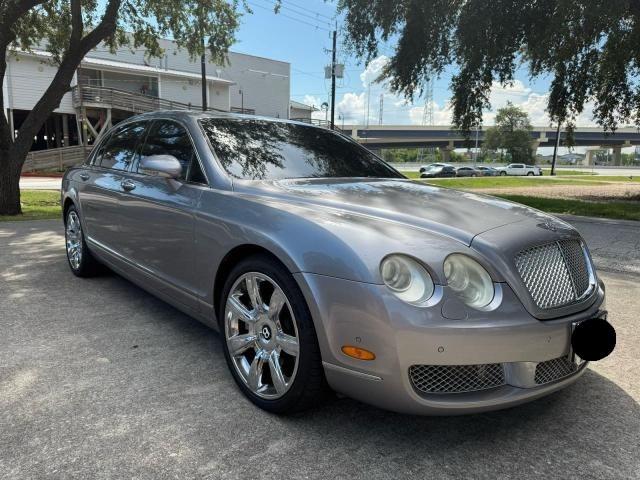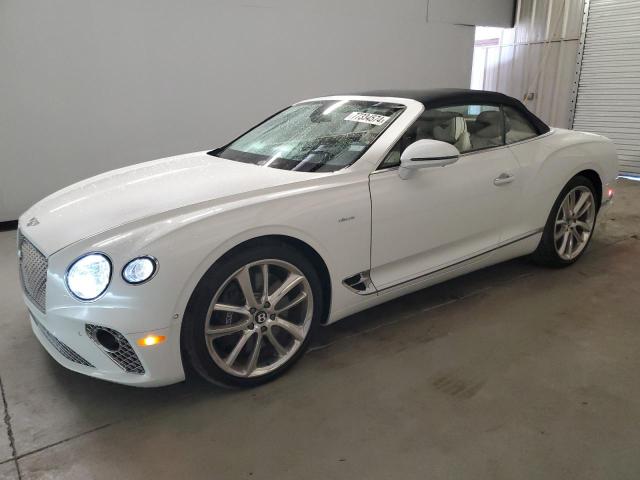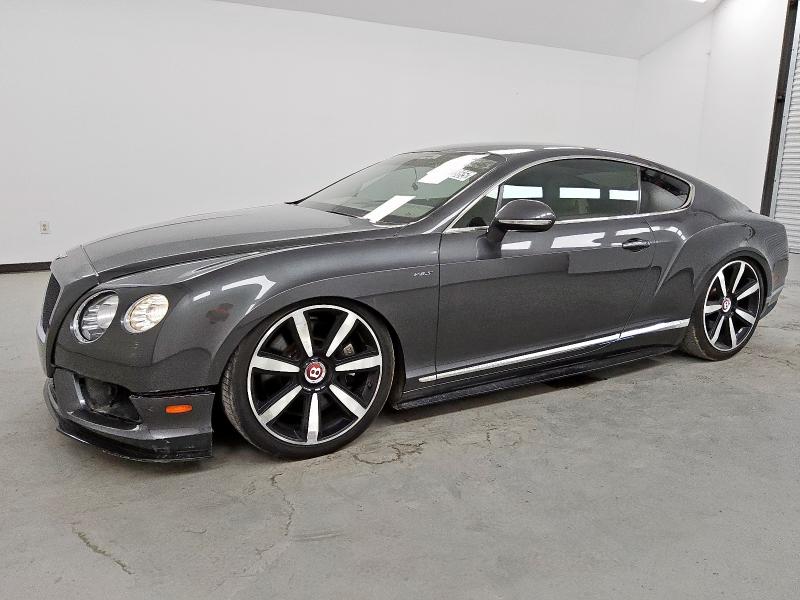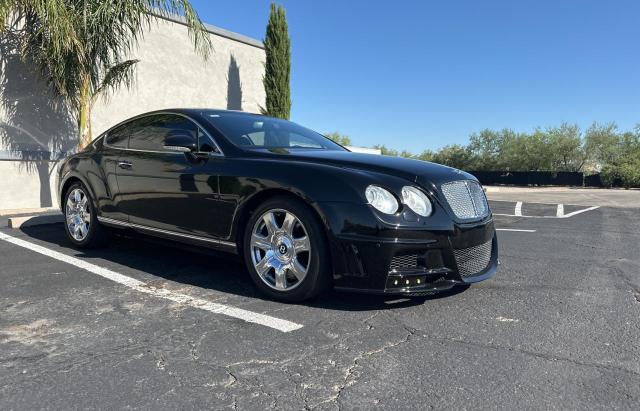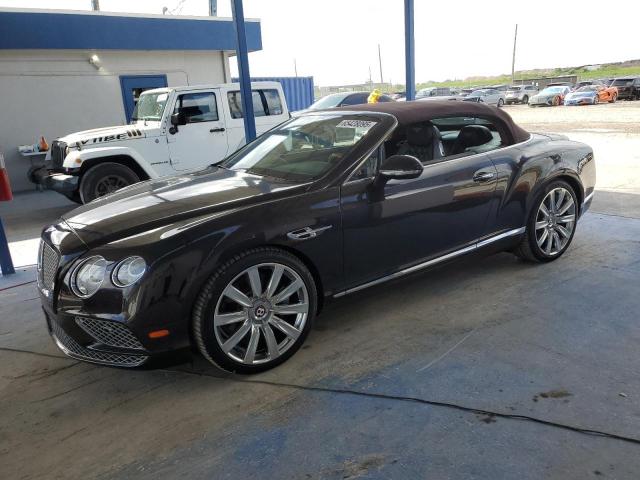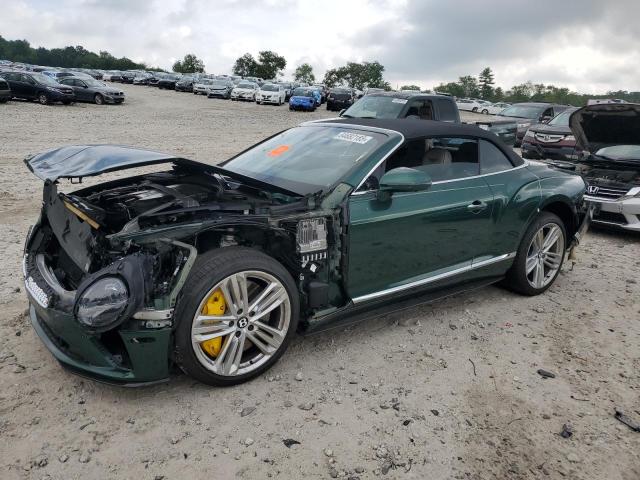2005 BENTLEY CONTINENTAL | SCBCR63WX5C029178
2005 BENTLEY CONTINENTAL | SCBCR63WX5C029178
Lot details
- Sale Date2025-06-15
- Lot Number42256076
- ACV32668 $
- LocationACE - Perris (CA)
- Odometer68,768 miles (110,671 km)
- Primary DamageFRONT END
- SellerAuto Club of Southern CA (ACSC)
Vehicle details
- Make
- Model
- Year2005
- FuelGasoline
- Engine6.0L W-12 DOHC, VVT, turbo, 552HP
- TransmissionsAutomatic
- Drive TypeAll-Wheel Drive
Vehicle specifications
1
~$270,000
Engine: 6.0L twin-turbocharged W12
Torque: 800 Nm
0–100 km/h: ~3.9 s
The first-generation Bentley Continental was known for combining aristocratic luxury with immense power, but the Supersports was something else entirely. It shed over 100 kg through the removal of rear seats and use of lightweight components, transforming the grand tourer into a legitimate high-performance weapon. With 630 hp and 800 Nm of torque from its 6.0L twin-turbo W12, it surged to 100 km/h in under 4 seconds—making it the fastest and most powerful Bentley ever at the time.
Bentley re-engineered the suspension, widened the track, and upgraded the brakes with carbon-ceramic rotors—the largest ever fitted to a production car at the time. The recalibrated all-wheel-drive system and quicker steering gave it sharper turn-in and composure, enabling handling far beyond what its 2.2-ton curb weight might suggest.
Visually, the Supersports distinguished itself with smoked headlights, widened rear arches, unique 20-inch wheels, and carbon-fiber detailing. Inside, racing-style Alcantara bucket seats, carbon trim, and a sport-focused layout created a more driver-centric cabin. It was brutal, composed, and surprisingly agile—proof that even Bentley’s most luxurious coupe could be tuned into a true high-speed thoroughbred.
Final Bid Bentley Continental (2005)
$10,100
$10,150
$10,200
Body Styles
The Bentley Continental was introduced as a two-door luxury grand tourer (GT) and later expanded into a convertible variant (GTC). The GT’s body is defined by its wide stance, muscular haunches, long hood, and signature fastback roofline — delivering a perfect blend of elegance and presence. The GTC, introduced in 2006, retained the coupe’s proportions while incorporating a fully automatic multi-layered soft top that folded in 25 seconds, offering open-air touring without sacrificing refinement or structural rigidity.
Both models share a distinctive design language anchored by quad circular headlamps, a large matrix grille, pronounced rear arches, and strong shoulder lines. Built on the VW D1 platform but extensively reengineered in Crewe, the Continental GT and GTC introduced Bentley to a new era: one of all-wheel drive, twin-turbocharged power, and everyday usability — all wrapped in unmistakably British luxury.
Model Name Meaning (Manufacturer)
The “Continental” name first appeared on Bentley’s legendary R-Type Continental in 1952 — a coachbuilt grand tourer capable of sustained high-speed travel across Europe. The revival of the name in 2003 signaled a return to that vision, with the new Continental GT and later GTC designed as high-speed, long-distance luxury machines for the 21st century. The suffix “GT” stands for Grand Touring, describing a coupe meant for refined, powerful travel. “GTC” adds Convertible, indicating the drop-top version with the same performance and character.
Model Name Meaning (Languages)
The word “Continental” stems from Latin continentem, used in multiple languages to describe a vast landmass or cross-national scope — symbolizing power, grace, and range. “GT” is derived from the Italian Gran Turismo, meaning a car built for grand touring with speed and comfort, while “GTC” simply adds Cabriolet, from the French word for a folding-roof car. Together, these designations position the Continental GT and GTC as high-speed transcontinental machines that fuse European elegance with raw engineering strength.
Body & Interior Colors and Rims
The first-generation Bentley Continental GT, produced from 2003 to 2010, marked a bold reinvention of the Bentley brand — combining cutting-edge performance with handcrafted British luxury. Its color and trim options reflected that dual identity, offering a high degree of personalization, sophistication, and exclusivity.
The exterior color palette was extensive, ranging from stately, conservative hues to more expressive and commanding finishes. Traditional Bentley tones like Beluga Black, Moonbeam Silver, Cypress Green, and Midnight Emerald gave the Continental a dignified, almost regal presence, while brighter and more contemporary options such as Moroccan Blue, Silverlake, and St. James Red highlighted its sporting proportions. Special-order paints, including bespoke Mulliner finishes and satin effects, allowed owners to select colors far beyond the standard offerings — with nearly limitless custom blends and even dual-tone combinations available through the Bentley personal commissioning program. The car’s sweeping coupe silhouette and signature matrix grille were complemented by deep, polished layers of clearcoat that emphasized the flowing bodywork under different lighting conditions.
Inside, the Continental GT was a showcase of British craftsmanship, with nearly every surface hand-trimmed in premium materials. Leather upholstery, available in over a dozen colors, included classics like Saddle, Burnt Oak, Portland, Magnolia, and Imperial Blue. Interiors could be specified in monotone or two-tone schemes, often accented by contrast piping, cross-stitching, or embroidered Bentley logos. Dashboard and trim inlays came in a wide array of wood veneers such as Burr Walnut, Dark Stained Madrona, and Bird’s Eye Maple, alongside more modern options like Engine Turned Aluminum and Piano Black. The Mulliner Driving Specification elevated the cabin with diamond-quilted seat panels, knurled metal controls, drilled alloy pedals, and unique color combinations that set each build apart. Every surface, from the gear selector to the headliner, conveyed a tactile sense of bespoke quality that few rivals could match.
Wheel options were both elegant and assertive, underscoring the car’s grand touring intent. Standard models came equipped with 19-inch multi-spoke alloys in painted or polished silver, while Mulliner and Speed models offered more aggressive 20-inch wheels in split-spoke or twin-spoke designs. Finishes included bright machined surfaces, dark chromed edges, and anthracite coatings that visually grounded the car. Some limited editions featured model-specific rim patterns or center caps with unique Bentley badging. Beyond aesthetics, the wheels were designed to support the GT’s weight and performance — capable of handling the car’s 6.0-liter twin-turbo W12 and its remarkable high-speed cruising stability. The combination of tailored paint, sumptuous interior textures, and finely crafted rims made every Continental GT from this era a seamless blend of tradition, power, and prestige.
Top Expensive Options
- Mulliner Driving Specification (quilted leather, alloy pedals, 20" wheels): $8,500
- Two-tone exterior paint: $6,000
- Naim for Bentley premium audio system: $6,900
- Carbon ceramic brakes (late models): $15,000
- Adaptive Cruise Control: $3,500
- Contrast piping and stitching: $1,500
- Heated and ventilated front seats: $1,200
- Valet key and privacy locking system: $750
- Power-operated trunk (GTC standard, GT optional): $600
- Embroidered Bentley logos on headrests: $450
vs Competitors
When launched in 2003, the Bentley Continental GT carved out a unique niche between high-performance sports cars and ultra-luxury grand tourers. It competed most directly with the Aston Martin DB9, Mercedes-Benz CL600, and Maserati GranTurismo. Compared to the DB9, the Continental GT offered superior all-weather usability thanks to its AWD system, greater torque at lower RPMs, and a more refined, tech-oriented cabin. While the DB9 won in design purity and emotional styling, the Bentley delivered daily-drivable prestige with equal grandeur.
Against the Mercedes CL600, the Bentley positioned itself as more driver-focused and bespoke. The CL offered a smoother ride and more understated character, but the Continental GT had the charm of handcrafted leather, wood, and British elegance, combined with thundering W12 performance and tighter chassis response. Versus the Maserati GranTurismo, the Bentley was heavier but far more opulent and easier to live with — offering more torque, more comfort, and a less temperamental ownership experience.
The Continental GTC had few true rivals in the luxury convertible space. While the Rolls-Royce Phantom Drophead existed at a far higher price point, and the Mercedes SL600 offered V12 luxury in a smaller body, the GTC sat alone as a full-size, AWD, four-seat convertible capable of serious speed, comfort, and prestige — making it the top-tier open-air cruiser of its time.
Fun Fact
The Bentley Continental GT was the first production car in the world to pair a W12 engine with an all-wheel-drive system — a technical achievement that gave it supercar pace in all weather. Its 6.0L W12 was essentially two narrow-angle VR6 engines joined at 72°, developed by Volkswagen and tuned in Crewe. Despite weighing over 2,300 kg, it could accelerate to 100 km/h in under 5 seconds — with leather-wrapped, wood-trimmed effortlessness.


